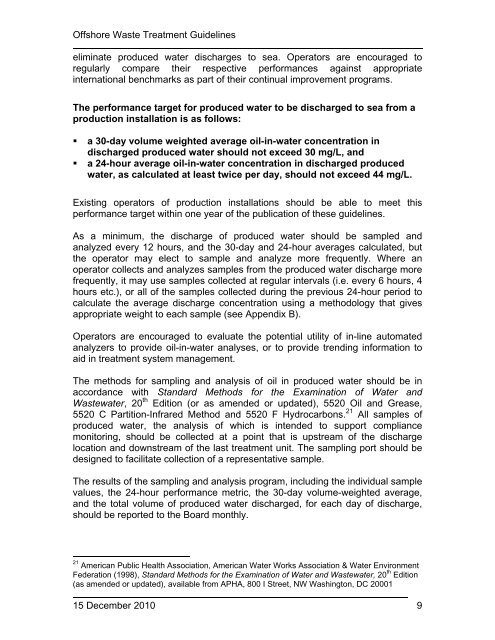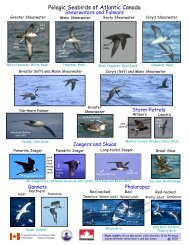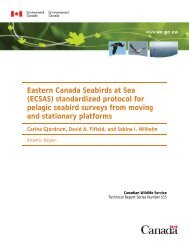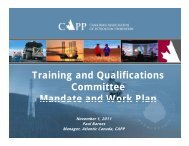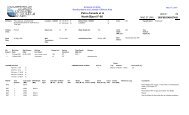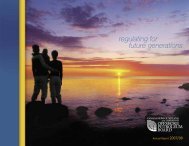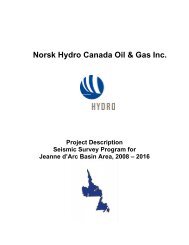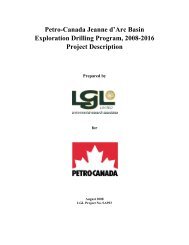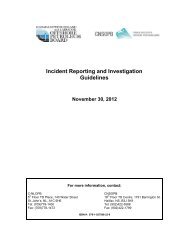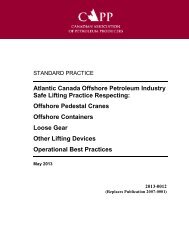Offshore Waste Treatment Guidelines - Canada-Nova Scotia ...
Offshore Waste Treatment Guidelines - Canada-Nova Scotia ...
Offshore Waste Treatment Guidelines - Canada-Nova Scotia ...
Create successful ePaper yourself
Turn your PDF publications into a flip-book with our unique Google optimized e-Paper software.
<strong>Offshore</strong> <strong>Waste</strong> <strong>Treatment</strong> <strong>Guidelines</strong>eliminate produced water discharges to sea. Operators are encouraged toregularly compare their respective performances against appropriateinternational benchmarks as part of their continual improvement programs.The performance target for produced water to be discharged to sea from aproduction installation is as follows:• a 30-day volume weighted average oil-in-water concentration indischarged produced water should not exceed 30 mg/L, and• a 24-hour average oil-in-water concentration in discharged producedwater, as calculated at least twice per day, should not exceed 44 mg/L.Existing operators of production installations should be able to meet thisperformance target within one year of the publication of these guidelines.As a minimum, the discharge of produced water should be sampled andanalyzed every 12 hours, and the 30-day and 24-hour averages calculated, butthe operator may elect to sample and analyze more frequently. Where anoperator collects and analyzes samples from the produced water discharge morefrequently, it may use samples collected at regular intervals (i.e. every 6 hours, 4hours etc.), or all of the samples collected during the previous 24-hour period tocalculate the average discharge concentration using a methodology that givesappropriate weight to each sample (see Appendix B).Operators are encouraged to evaluate the potential utility of in-line automatedanalyzers to provide oil-in-water analyses, or to provide trending information toaid in treatment system management.The methods for sampling and analysis of oil in produced water should be inaccordance with Standard Methods for the Examination of Water and<strong>Waste</strong>water, 20 th Edition (or as amended or updated), 5520 Oil and Grease,5520 C Partition-Infrared Method and 5520 F Hydrocarbons. 21 All samples ofproduced water, the analysis of which is intended to support compliancemonitoring, should be collected at a point that is upstream of the dischargelocation and downstream of the last treatment unit. The sampling port should bedesigned to facilitate collection of a representative sample.The results of the sampling and analysis program, including the individual samplevalues, the 24-hour performance metric, the 30-day volume-weighted average,and the total volume of produced water discharged, for each day of discharge,should be reported to the Board monthly.21 American Public Health Association, American Water Works Association & Water EnvironmentFederation (1998), Standard Methods for the Examination of Water and <strong>Waste</strong>water, 20 th Edition(as amended or updated), available from APHA, 800 I Street, NW Washington, DC 2000115 December 2010 9


